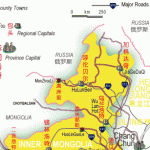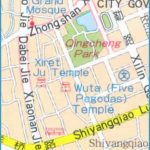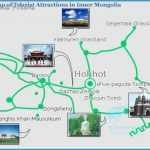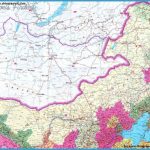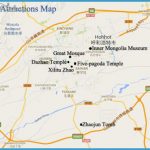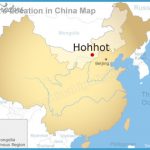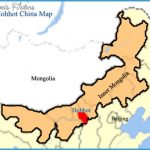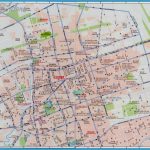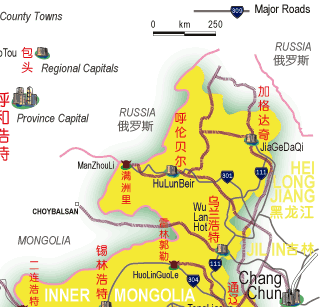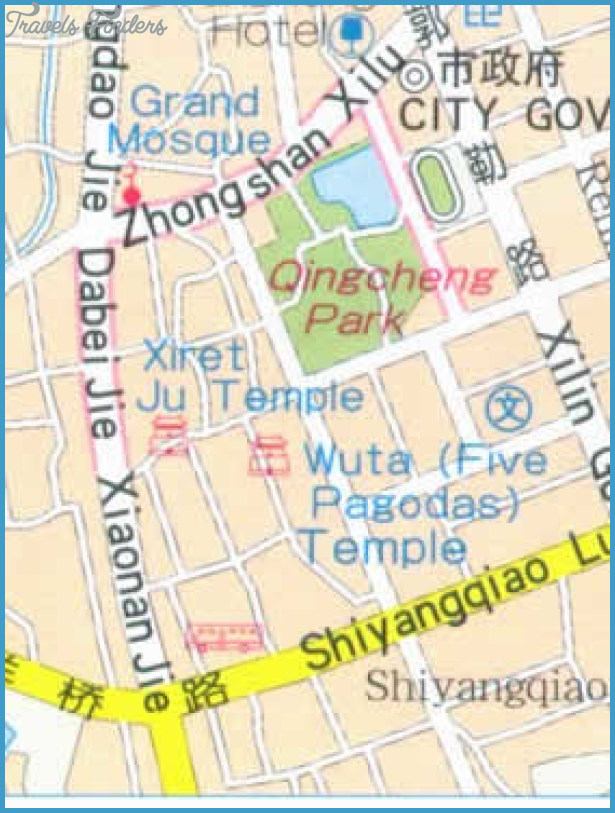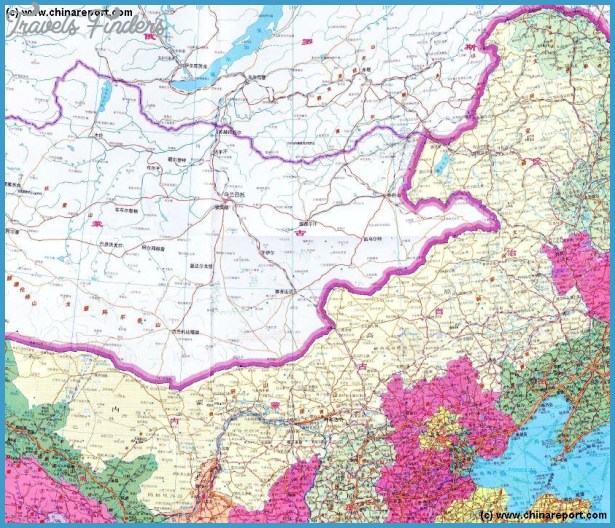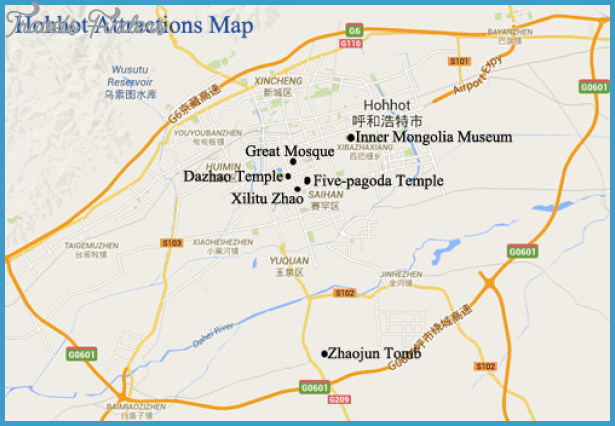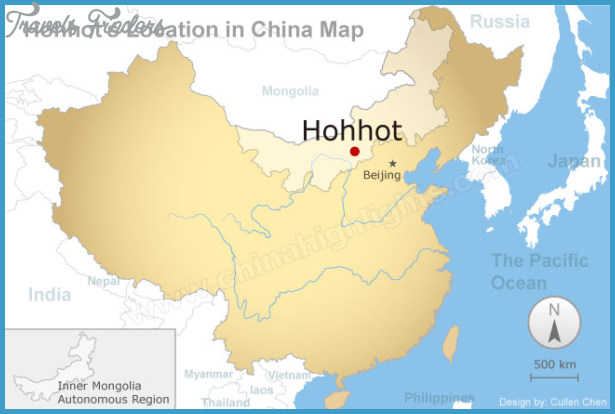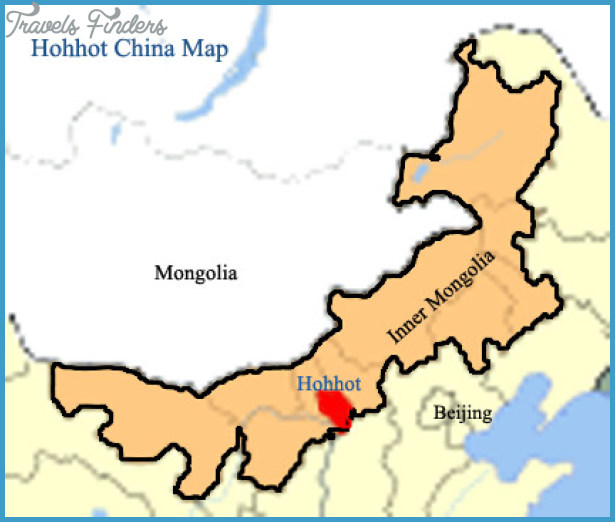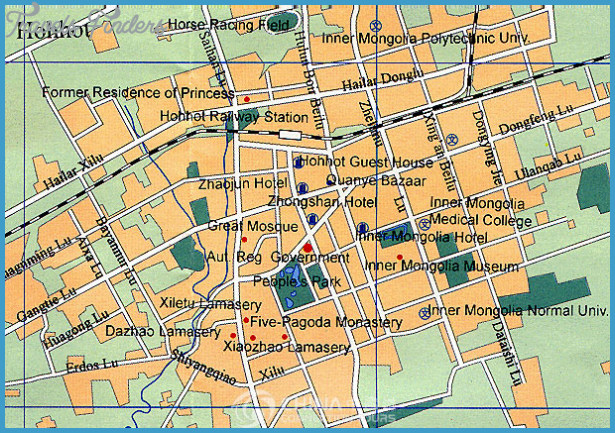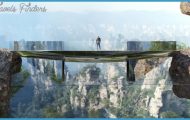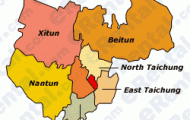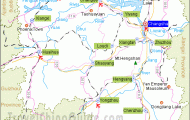Inside a Buddhist temple
The Temple ofthe Five Pagodas (Wuta Si), in the south ofthe town about Temple ofthe 200m/220yd from the People’s Park (Renmin Gongyuan), was built during Five Pagodas the reign of Yongzheng (1723-35); unfortunately, only the Diamond Pagoda has survived. Its base, decorated with floral and animal motifs, geometric patterns and quotations in Chinese, Mongolian, Tibetan and Sanskrit, is surmounted by five pagodas placed close together, the central one being the highest. They are adorned with figures of the Buddha and Bodhisattva. Set into a decorative wall behind the pagoda is a stone tablet, 144cm/58in. in diameter, engraved with an astronomical map showing the twelve signs of the zodiac, the twelve signs of the Chinese horoscope and some two thousand stars. The inscriptions are in the Mongolian language.
This map bears witness to the high standard of knowledge acquired by 18th c. Chinese astronomers.
This mosque in the Chinese style is to be found to the north-west of the Hohhot Mosque
Temple of Five Pagodas, at the old north gate of the town. It was founded in (Qingzhen Si) the 18th c. and restored in 1933. The Islamic community numbers about 20,000. In addition to the Main Hall the mosque has a Moslem bath. The temple houses 30 volumes ofthe Koran in Arabic which are two hundred years old. The minaret has a small pavilion on the top of it. The racecourse in the north of the town is the scene of traditional Mongol- Race course ian equestrian games as well as horse and camel races. (Sai Ma Chang) The 33m/108ft high sepulchral mound to be found 9km/5’/2 miles south of Surroundings the town, is the last resting-place of Wang Zhaojun (Zhaojun Mu), the concubine of one ofthe emperors of the Western Han dynasty. In 33 b.c. she Tomb of was married to a Xiongnu prince in order to cement relations between the Wang ztlaoiun legends and poems, and she is regarded as a symbol of peace. Her tomb is mentioned in a book written as long ago as the Tang era (618-907).
The tablet in front ofthe tomb bears an inscription by Dong Biwu (1885 1975), the former President of the People’s Republic of China. A nearby exhibition hall provides information on the life of Wang Zhaojun.
Standing 43m/141ft high and made of wood and brick, the White Pagoda, 18km/11 miles east ofthe town centre, was built at the end ofthe 10th c. The exterior walls contain inscriptions-the oldest dating from 1162-written in Chinese, Ancient Persian, Ancient Syrian and other languages which are no longer spoken.
From Hohhot visitors can make excursions lasting one or several days into areas of grassland, such as that of Xilamuren (87km/54 miles to the north) or Gegentala (“Radiant Grass”, 145km/90 miles to the north). Visitors will spend the night(s) in yurts (Mongolian nomads’ circular skin- or felt-covered tents), and will be offered a varied programme including horse- and camel-rides, visiting a shepherd’s family, watching wrestling bouts and enjoying evenings round the camp-fire. There will also be an opportunity to sample typical Mongolian cooking.

